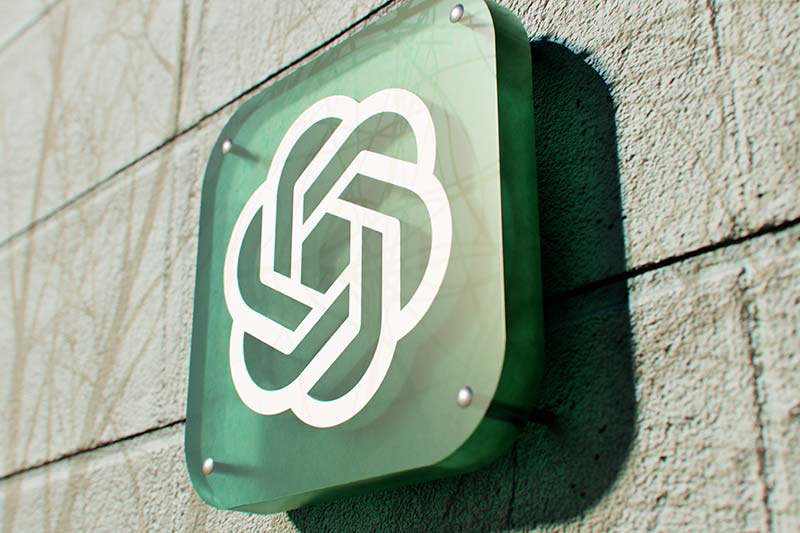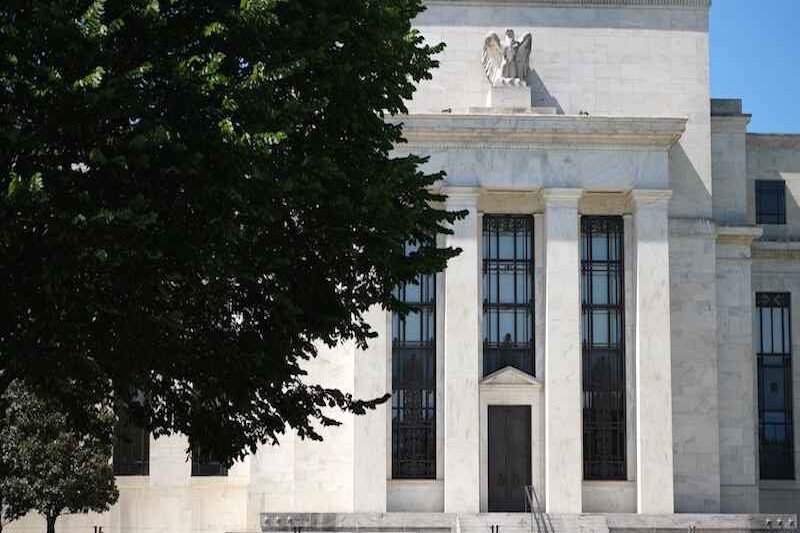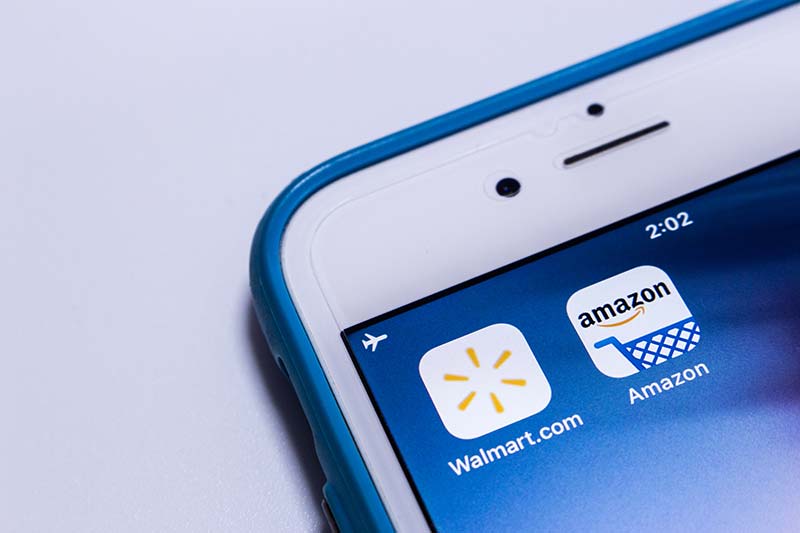Buy This, Not That: This Recession-Proof Favorite Might Be in Trouble
Shah Gilani|August 14, 2024

In all the hubbub of last week… when everyone thought the sky was falling… I got to thinking…
If we were headed toward a recession… what stocks would look appetizing?
My answer was companies in the fast-food and fast-casual restaurant industry.
When people start to tighten their belts… their spending shifts from dining out to getting takeout.
So today we’re looking at some of the biggest cooks in the fast-food kitchen.
If you don’t recognize some of their names… you’ll surely know their brands.
But are they a BUY today… or if a recession comes?
It’s all in the latest episode of Buy This, Not That… your exclusive guide to the stocks that are worthy of your money.
Click on the thumbnail below to dive in.
TRANSCRIPT
Hey, everybody, Shah Gilani with your weekly BTNT, as in Buy This, Not That.
Well, one thing that investors or traders at a minimum are doing is buying this dip.
So far, so good.
Let’s hope it lasts and markets continue to try to climb out of the hole that the big yen carry trade dumped on everyone at the beginning of last week. But so far, so good. Recovery is on the way.
What may be a problem is the recession that some people think is out there. So this week I’m going to talk about a sector that is often recession-proof… the inexpensive dining-out restaurants and chains.
The McDonald’s of the worlds, the Dardens of the world… Burger King, Pizza Hut, you know what I’m talking about.
Those should do well if the consumer starts to slip. If we’re heading into a recession, then, generally speaking, people are going to probably downscale to less expensive dining out or fast food options as opposed to the Capital Grills of the world, the Palm Steakhouses of the world, the finer dining establishments.
So these big names, I’m going to hit the biggest ones listed in the U.S. and talk about them.
But the preface to this is if the market is bouncing because of expectations of a Fed rate cut… and the expectations for a Fed rate cut are that the economy may be slipping, then if we’re slipping into recession, are these restaurants going to do well, are they going to be the go-to for people, or are they going to suffer also if the consumer has more problems ahead?
So that’s what I want to address, but I’m going to address it through what’s happened with their earnings and chart-wise, what they look like as far as whether you should buy them or not.
So let’s start with the big boy. And if you don’t know what or who the big boy is, yes, you probably guessed it, it’s McDonald’s (MCD).
So let’s see if I can share this with you. And I’m going to start with McDonald’s here.
This is a five-year chart of McDonald’s. As you can see, there’s been pretty nice progression up until late. But if we look at McDonald’s on a one-year basis, it doesn’t look so good, does it?
Now, we’re talking about $193 billion market cap company. We’re talking about revenues knocking on $26 billion a year globally. Profit margin of 32.25%.
So yes, McDonald’s is the big dog in pretty much every respect. And it also sports a tiny little dividend yield of about 2.48%. Not impressive, but at least there’s something there for investors who want to collect a little income off of the stock.
McDonald’s missed its second quarter earnings and missed on revenue. Same-stores sales fell, which is not good. And this was the lowest sales they’ve had since the first quarter of 2020… early in the pandemic when sales of everything just fell through some bottom and no one knew where the bottom would be.
Well, McDonald’s suffered too. Obviously they were closed. So the fact that now things are good, McDonald’s should be doing well. But look at this chart. All of a sudden, bang, this thing is just looking kind of ugly right here. The stock is trying to make a comeback here with the market lately trying to make a comeback.
But industry traffic declined in all its major markets. Australia, Europe, of course the United States, Middle East, everywhere. Sales, same-stores sales, declined for McDonald’s. And part of what the commentary was in the earnings call was that diners considered their prices too high.
Ouch. Yes, prices at McDonald’s have gotten high. I was at McDonald’s with a friend – we stopped by one maybe a month ago. Our total for the two of us for a couple of hamburgers, fries and Cokes was $25. It’s like, wait a second, did they double our order? No, it was $25.
So McDonald’s has initiated a $5 meal. The idea of that got investors excited. They’re going to bring traffic back because it was already bringing traffic back. And they talked about that on the earnings call.
The problem with the new pricing was they did that five days before the end of the last quarter. So the quarter’s numbers didn’t reflect it.
The other problem is it was supposed to be a four-week rollout. They’re now talking about extending that. Why? Because it’s bringing back traffic. It’s bringing back traffic because the prices have gotten too high.
Diners want something a lot more palatable in terms of price for a meal. Yes, it’s bringing back traffic. But there go the margins.
McDonald’s is facing something of an uphill battle.
I look at the stock here and I see resistance at the 200-day moving average, which is $275. The stocks is trading at $269 and change right now. I’m going to say I’m not a buyer of McDonald’s here. Long term, yes, but that long term for me is way down here on the lows, which happened on July 9.
If McDonald’s gets down to $247, $240, I would pick some up down there on a bargain basis and shares would be a hold. But as far as where is it going to go, it’s going to take a lot of energy from McDonald’s to get back above $300 from $269.
And especially it’s going to take even more energy if it drops down to the $240 range. But I wouldn’t touch McDonald’s here. Again, just going to give you the long-term perspective. The yield doesn’t cut it for me on the dividend.
Long-term perspective here, there’s better places to park your capital, even though I do like McDonald’s.

Next up, Chipotle Mexican Grill (CMG). Now Chipotle Mexican Grill has been on a tear. Over the last 15 years, the average annual gain for the stock has been 28%.
Compare that to the S&P, which on an annualized basis over the same 15 years is about 14%. So it’s absolutely killing it.
Chipotle did a 50-for-1 split back in June. It was one of the biggest stock splits I’ve ever seen.
The stock was trading back then at $3,283 a share. The split took the stock down to $66 a share. Keep in mind, a split is just like saying, okay, I got $50, I’m going to split that into 50 $1 bills.
There’s no difference. I have a $50 bill or I have 50 $1 bills. So nothing changes in terms of the value. It’s just that now I have 50 $1 bills.
Shares are trading right now at just a shade under $52. After the split it was $66. So it’s come down. You do a split because you want to bring in more retail investors, more institutional investors… folks who don’t want to spend $3,000 a share, who are going to spend $60 a share or right now $52 a share.
But the stock hasn’t really acted that well. On its five-year chart, you can see the growth, and all of a sudden, bang, it just rolls over…. and it rolls over fairly recently. Let’s look at the one-year chart here. You can see this high here is $69.26.
And that’s on the intraday basis. The intraday high. So then it just rolls over. That is June 18, after the split.
The stock just starts tanking. Why? I don’t know… because the earnings are pretty good.
As far as the earnings, yes, same-store sales were better than expected. But they didn’t do so great. Yes, they beat on quarterly revenue. Yes, they beat on quarterly earnings and yes, they reiterated that their full-year outlook guidance was positive.
So good, good, and good. But they said that demand had peaked in April. The stock has taken some pretty hard hits, including down 8%earlier today. It’s Tuesday when I record this. It’s down 7% now.
But investors starting to look at Chipotle and the heck of a ride it’s had. Is it time to take some profits on it? It doesn’t have a dividend, so we don’t have to really be so over concerned about, “Oh what am I missing out there?” Its profit margin is 13.23%.
So it’s obviously a well-run company with a stock that has been phenomenal. I know 28% annualized growth on the stock is phenomenal, but investors aren’t acting like it right now. So I would buy Chipotle based on the history, but not here, not at $52. I would look at this and this, these two ugly bars here.
And that’s about $48. So if I’m going to buy Chipotle for a long-term hold, I would look to buy at around $48. Somewhere down around where these two bars bottom out. And I would probably add to that at $36.
But I wouldn’t chase it up here. If it rises, then great… but where’s it going to go? Yeah, you can go back up to $69, that’s great. But the way the stock is acting… and today, gapping down… that’s scary.
So is Chipotle a buy? Yes. Longer term hold? Yes. At this level? No.
I say buy down at $48 and average down lower to $38. I would then be happy to hold Chipotle given its history of amazing annual returns.

Next up, Yum Brands (YUM). Yum Brands is trading today, again, this is Tuesday when I’m recording this, $138 and change. The company has a $38 billion market cap and $7.1 billion in revenue.
Its profit margin is 22% across their different franchises and their different offerings. We know what they are. You should. KFC Chicken, Taco Bell, Pizza Hut, Habit Burger.
The problem with Yum Brands right now, and this chart, again, is pretty sloppy here on a one-year basis. An ugly dip, and trying to make a comeback. But the problem with the earnings just out is that while EPS beat slightly and earnings per share for the quarter beat slightly over a year ago, revenue missed. That’s not a good thing.
The stock had a nice pop, but I think the earnings have probably – I don’t want to say maxed out – but I see problems.
Taco Bell had the only same-store sales increase, at about 4%, which was pretty darn good. And here’s what’s interesting. Taco Bell is their probably greatest value proposition as far as KFC, as far as Pizza Hut. Taco Bell has the lowest price points per meal according to Yum Brands. That tells us that Taco Bell, mostly in the U.S., is the only place where they saw same-store sales increase if the consumer is looking for better value.
So they’re going down to Taco Bell. Meantime, KFC and Pizza Hut saw a decline in same store sales across the U.S. and across all other international offerings. So, hmm, a little worrisome there. Consumers are starting to pull back maybe globally, but certainly I think in the United States.
So is this a great stock to buy here? No, I wouldn’t buy Yum Brands here. If you look at it on a longer term basis, it’s not too dissimilar from some of the other stocks we just looked at. There’s a whole lot of nothing going on here.
I wouldn’t go chasing this because what do you expect to get out of that? Where do you think your capital is going to go? It’s going to climb to what? The stock’s trading $138 and change.
Where are you going to go, $200? Double, $270? No. I just don’t see Yum Brands having the energy.
Not when same store sales are down in two of their major offerings, both KFC and Pizza Hut. Just not something worth chasing for to me. So to me, Yum Brands is a NOT. Sorry to say and I love Taco Bell.

Next up is QSR Restaurant Brands (QSR). It has Burger King as their biggest offering. Popeye’s Firehouse Subs and Tim Horton’s. Tim Horton’s is more popular in Canada than they are down here. A lot more offerings in Canada as far as Tim Horton’s.
Coffee houses, donuts, pastries, pretty popular in Canada, and also Tim Horton’s doing very well. Burger King not so much. Firehouse Hubs not so much.
QSR is a $22 billion market cap company with $7.5 billion in revenue globally. 17% profit margin and it has a little bit of a dividend. I like it.
Dividend yield 3.32%. That’s not so bad.
They beat on revenues. Revenue per share came out to $208 versus analyst expectations for $202. The earnings per share, a slight miss.
Came in at 86 cents diluted versus 87 cents a share was the analyst expectation. Net sales across the company rose 17%.
Now, it doesn’t look like the stock is doing much. If you saw earnings, if you saw sales up 17% across the board, you’d expect this stock to have a pop and it doesn’t, so that is worrisome to me as an investor.
Trading here at $70 and change. I don’t see it. I just don’t see it as a buy. Maybe the stock has to get above its 200-day moving average and that is going to be close to $73 on the 200-day moving average. Stock is $70 and some change right now.
If it gets above the 200-day, I’m not sure where it’s going to go. It’s going to see some resistance at $75. It’s going to see resistance at $77 and then of course when we get back up to where its recent highs are, it’s going to $82. So is this worth chasing here to try and catch a rise to new highs?
I don’t think so. So as far as QSR, it’s not a buy down here. Again, there are better places to put your money.

Next up is Darden (DRI).
Now, Darden, not everybody knows the name, but you certainly know what their offerings are. Olive Garden, Longhorn Steakhouse, they have something called Scratch Kitchen, Yard House, a great place to go watch sports, have some beers on the hot rent, Capital Grill and Seasons 52. They also have Capital Burger.
Great set of companies of subs, of offerings, of restaurant opportunities, dining out opportunities, fast food opportunities. They do a pretty good job. But they’re not doing so great.
Darden’s trading at $144 and change, again, this is a $16.2 billion market cap company. Profit margin is 9%, just a shade over 9%. The thing that I do like about Darden, the only saving grace for me down here, is it’s got a 3.94% dividend yield. So we’re talking almost 4%. If the stock dips a little more, I wouldn’t mind maybe picking up a little Darden for that 4% dividend yield and you’ll get 4% if the stock dips down a little bit.
Would I chase it here? No. I think based on the way this chart looks, they’re having problems, I think, with their upscale restaurants and they just closed an acquisition recently of Ruth’s Chris, which made their numbers look good because that caused their store sales, same-store sales, and new sales and total overall sales to rise 6.8%. That’s because of the acquisition of Ruth’s Chris was accretive.
So am I impressed with that? No.
I don’t think that the higher end restaurant chains, the Ruth’s Chris, the Capital Grills, the Season 52s, are going to hold up if consumers are under pressure.
And that seems to be the case. And that’s what a lot of these earnings reports and what the CEOs and CFOs are telling us is that consumers are under pressure, hence why McDonald’s brought back the $5 meal.
So as far as the high-end restaurant chains here and within the Darden group, I think they’re going to weigh on Darden.
So would I buy Darden here? No, it’s not a buy down here. If Darden gets down to $135, I would pick up shares, and the dividend would be over 4% at that point.
It’s a longer-term hold. I think you can eke out maybe a 50% gain in two years. So Darden, I would buy on a lower dip.
But chasing it in here to own it? Not worth it so much.

Look, if the economy holds up, if we don’t fall into recession, if the Fed cuts and we have a soft landing or no landing and just take off again and start to see economic growth pick up, then these restaurants are going to start to do better.
But guess what? If that happens, all of that happens, you’re going to want to be in the tech stocks that have gotten beaten up.
You’re going to be one going to be in the kinds of leadership groups that have suffered the most, that will likely be and are already starting to look like great bargains, certainly since last Monday.
And those are the ones you’re going to have the greatest push higher if things turn out well.
If things don’t turn out well, the restaurant group, these fast food chains, they’re going to be a mixed bag and that’s why some of them are maybe longer term holds at lower levels, but for the most part I’m going to pan the group, it’s like, mm, not so fast.
That’s it for this week. I’ll catch you guys next week.
Cheers everybody.

Shah Gilani
Shah Gilani is the Chief Investment Strategist of Manward Press. Shah is a sought-after market commentator… a former hedge fund manager… and a veteran of the Chicago Board of Options Exchange. He ran the futures and options division at the largest retail bank in Britain… and called the implosion of U.S. financial markets (AND the mega bull run that followed). Now at the helm of Manward, Shah is focused tightly on one goal: To do his part to make subscribers wealthier, happier and more free.



